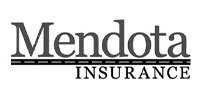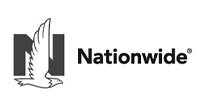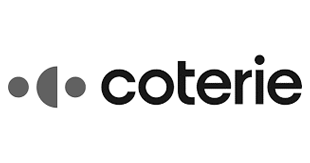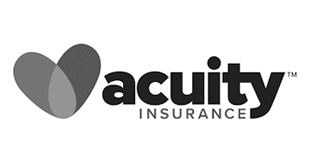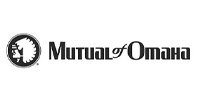What is errors and omissions insurance?
Errors and omissions insurance
Errors and omissions insurance (E&O) helps cover the cost of a lawsuit if a client claims your work was inaccurate, late, or never delivered. It’s sometimes called professional liability insurance.
Does your small business need errors and omissions insurance?
If you provide professional advice or services to clients, you likely need this policy.
Your clients might require errors and omissions insurance in the terms of a contract. And it’s strongly recommended for professionals who make a living off their expertise.
E&O protects your business if you’re accused of a mistake, oversight, or professional negligence. This insurance will cover legal defense costs related to the lawsuit.
An errors and omissions policy can pay for court costs, settlements, and judgments. You’ll typically pay a deductible, and your insurance provider will pay legal expenses up to your coverage limit.
Do you need E&O if you’re careful and avoid making mistakes?
Being careful doesn’t make you immune to lawsuits. You still need E&O insurance to protect against clients who sue for no good reason.
Besides, even the most meticulous professional makes a mistake from time to time. And when that error causes your client to lose money, they’re less likely to be understanding.
The client’s negative experience could lead to a costly lawsuit. Even if the lawsuit is frivolous and dismissed, you’ll still have to pay for a legal defense.

An errors and omissions insurance policy typically covers:
- Work mistakes and oversights
- Undelivered services
- Breach of contract
- Number of employees
- Missed deadlines
- Professional negligence
Most E&O claims are straightforward, such as failing to deliver a product or service as promised. However, claims of professional negligence can be more complicated.
When a client hires you to provide a specialized skill, they’re entitled to a reasonable standard of care. If your work falls short of this standard, the client can sue for professional negligence.
Do clients require errors and omissions insurance coverage?
Some clients do require errors and omissions coverage. It guarantees that you’ll be able to pay a settlement or judgment if you fail to deliver on your promises.
Before they’ll work with you, these clients will often request a certificate of insurance that proves you carry E&O coverage.
Why is it important to keep your E&O policy active?
If you cancel your E&O policy, your business becomes vulnerable to client lawsuits.
A typical E&O policy is claims-made, meaning the insurance company pays claims only if they’re filed when the policy is active. And the incident must have occurred after a retroactive date that clearly defines the day coverage began.
To collect your insurance benefits, your policy must be active both:
- When an alleged mistake occurs, and
- When the claim is filed
All claims-made policies come with restrictions on covered claims, which is why it’s essential to maintain continuous coverage.
How much does errors and omissions insurance cost?

Your cost is based on a few factors, including:
- Amount of coverage
- Claims history
- Industry risk factors
- Business size
- Day-to-day operations
E&O insurance costs an average of $59 per month. This is based on the median cost of policies. And 18% of Safe Harbor Insurance’s small business customers pay less than $42 per month for their policies.
How does errors and omissions insurance protect common professions?
Insurance agents
Errors and omissions insurance for insurance agents can protect against an oversight that left a client vulnerable to liabilities. It also covers bad advice that led to inadequate coverage. Some clients may require proof of E&O insurance before they agree to work with you.
Real estate agents
Errors and omissions insurance helps real estate agents and brokers pay for lawsuits over failure to close, mismanagement, disclosure errors, or other professional issues. Unless you can prove you carry an E&O policy, some clients, buyers, or sellers may refuse to work with you.
Tax preparers
E&O for tax preparers covers the costs of lawsuits over missed deadlines, accounting errors, or lost documentation. This policy offers indirect protection for the client if there’s a mistake in their taxes. That’s why some clients will ask for proof of insurance before they’ll use your financial services.
IT professionals
Errors and omissions insurance protects IT professionals from lawsuits over contract disputes, data breaches, coding errors, and more. Some clients will only work with tech companies that can prove they have an active E&O policy.
Does errors and omissions insurance cover losses related to the coronavirus (COVID-19)?
If a client sues because you were unable to meet a deadline or complete a project due to the coronavirus, it’s possible that your errors and omissions policy would provide coverage.
But most business insurance policies exclude communicable disease coverage, which means that losses related to COVID-19 are not covered.
To find out if you’re eligible for a claim, please contact your insurance company’s claims department.
What’s the difference between errors and omissions and professional liability insurance?
Errors and omissions and professional liability insurance offer identical coverage. While the two policies are the same, different industries use different terms to refer to the same coverage.
Insurance agents, real estate agents, tax preparers, and IT professionals use the term errors and omissions insurance. But accountants, architects, consultants, and engineers call this policy professional liability insurance.
Lawyers and doctors refer to the same liability policy as legal or medical malpractice insurance. (While Safe Harbor Insurance doesn’t offer quotes for malpractice insurance, our licensed agents are happy to provide doctors and lawyers with other essential business insurance policies.)
What’s the difference between errors and omissions insurance and general liability insurance?
Errors and omissions insurance and general liability insurance both protect small business owners against legal costs, but they cover two different types of lawsuits.
Errors and omissions insurance covers client disputes over the quality of your professional services. General liability insurance covers customer bodily injuries, customer property damage, and advertising injuries.
How do I get an errors and omissions policy?
For free errors and omissions quotes, complete our easy online insurance application.
Once you’ve submitted your application, our expert insurance agents can help you find the E&O coverage that meets your needs. You should be able to get coverage quickly and receive a copy of your errors and omissions insurance certificate on the same day.
Once you have insurance coverage, you can access your certificate of liability insurance online.
What does errors and omissions insurance cover?
If a dissatisfied client sues your business over a work mistake, errors and omissions (E&O) insurance can cover your legal expenses, including the cost of a settlement or judgment.
Errors and omissions insurance provides coverage for:
- Work mistakes and oversights
- Accusations of negligence
- Undelivered services
- Missed deadlines
Work mistakes and oversights
Even a small professional error or oversight could end up costing a client money. When the client tries to recoup their losses by suing your business over the mistake, errors and omissions insurance helps pay for your legal costs.
Example: A real estate agent makes an error on an MLS sheet, incorrectly listing a home’s square footage as more than it is. The homebuyer realizes the error after purchasing the home and sues the agent. The real estate agent’s E&O policy covers the cost of hiring a lawyer and the eventual court-ordered judgment.
Undelivered services
If your business leaves work unfinished, it can interrupt your client’s business plans. When you fail to deliver promised services, a client could sue – especially if it negatively impacts the client’s bottom line.
Example: An insurance agent fails to procure adequate commercial auto insurance coverage for a client, despite promising to do so. When the client gets in an accident and goes to make a claim, they’re surprised to find themselves uninsured. They sue the insurance agent for failing to secure the appropriate coverage.
Accusations of negligence
If your business fails to meet minimum industry standards while working with a client, the client might sue your business for negligence. A dissatisfied client could still sue for negligence even when there’s nothing wrong with your work.
Example: A client hires a network security company to protect their customer data, but a data breach exposes the names and credit card details of thousands of customers. The client believes the network security company should have been able to prevent the incident and files a negligence lawsuit.
Missed deadlines
If your business misses a deadline, it could delay your client’s business plans and result in lost revenue. If a client sues your business over late work, errors and omissions insurance can cover the cost of the lawsuit.
Example: A tax preparer fails to file a client’s tax return before the deadline and now the client is forced to pay a costly fine. To recoup the fine, the client sues the tax preparer for missing the filing deadline.
Errors and omissions insurance does not cover:
- Customer injuries or property damage
- Employee injuries
- Damage to business property
- Employee discrimination lawsuits
- Vehicles used by a business
- Contingent bodily injury
Customer injuries or property damage
If you accidentally damage a client’s property or a client is injured at your office, general liability insurance will help pay for the client’s property or medical care. This policy can also cover your legal expenses if the client sues.
Example: A client falls and breaks an arm at a digital marketing agency. General liability insurance covers the client’s medical bills, including physical therapy and medications. If the client decides to sue, it can also cover legal costs like settlements and judgments.
Employee injuries
If an employee suffers a work-related injury or illness, workers’ compensation insurance can cover their medical expenses, as well as partial lost wages for the time they take off work.
Example: A property manager is injured while inspecting an apartment building. He needs medical attention and time off work to recover, so he turns to workers’ compensation to cover the cost of doctor’s visits, physical therapy, and partial wages.
Damage to business property
If your business property is damaged, destroyed, stolen, or lost, then the property coverage included in a business owner’s policy (BOP) can pay to repair or replace the affected items.
Example: A fire at a web hosting company damages computers, servers, and other important equipment. A BOP helps the company quickly replace the damaged property.
Employee discrimination lawsuits
If a job candidate or employee sues your business for harassment, discrimination, or wrongful termination, then employment practices liability insurance (EPLI) can cover the cost of your legal fees, as well as the cost of a settlement or judgment.
Example: A real estate agent accuses an agency of routinely giving male agents the properties with the highest commissions. She files a gender discrimination lawsuit against the company, which uses its EPLI policy to cover legal defense costs and pay a settlement to the agent.
Vehicles used by a business
Most states require commercial auto insurance for all business-owned vehicles. If your business uses personal or rented vehicles instead, you’ll need to purchase hired and non-owned auto insurance.
Example: An IT consultant is driving his own car with a client in it. He rear-ends a pickup at a stop sign. When the other driver sues, the consultant’s hired and non-owned auto insurance helps pay his legal bills.
Contingent bodily injury
Product liability insurance can help your business pay for lawsuits over contingent bodily injuries – which are client or customer injuries indirectly linked to your professional service.
Example: A freelance software developer helps a healthcare company develop a health monitoring application for its patients. A glitch in the program contributes to a patient injury. When the healthcare company sues, the developer turns to product liability insurance.
Errors and omissions exclusions
E&O insurance has exclusions that limit the scope of its coverage. For example, it won’t pay for lawsuits that allege discrimination or abuse against clients.
It also only covers lawsuits filed against your business by clients. If you file a lawsuit against a client who refuses to pay you, E&O won’t provide coverage.
Unless your policy has prior acts coverage, it will only cover claims filed while the policy is active and for incidents that occurred after you bought it.
You can fill the gaps in your E&O coverage with insurance endorsements. To make sure you have the coverage you need, contact an Safe Harbor Insurance agent.
How much does errors and omissions insurance cost?
Errors and omissions insurance protects your small business from the financial risks of professional mistakes. Your industry, as well as the scope of your professional practice, will affect the cost of coverage.
Average errors and omissions insurance costs for Safe Harbor Insurance customers
Regardless of policy limits, the median monthly cost of errors and omissions insurance is $59 ($713 annually). The median cost offers a more accurate estimate of what your business is likely to pay than the average cost of business insurance because it excludes outlier high and low premiums.
Most small business owners (51%) pay between $500 and $1,000 per year for their policies, and 18% pay less than $500. These figures were derived from an analysis of thousands of insurance policies purchased by Safe Harbor Insurance small business customers.

Industry risks impact errors and omissions insurance costs
Your industry impacts the cost of liability insurance since different professionals are exposed to different liabilities. Higher risk professions pay more for errors and omissions insurance than lower risk businesses.
For example, IT professionals pay a median premium of $730 per year, while finance and accounting professionals pay just $400 per year. An error in a building design project could lead to a significant loss for a client, which explains the high annual premium of $1,705 for building design professionals.

How coverage limits affect insurance costs
The claim limit on common errors and omissions policies varies significantly, from $250,000 to $2 million. However, most Safe Harbor Insurance customers (61%) purchase a $1 million / $1 million policy. This includes:
$1 million occurrence limit. While the policy is active, the insurer will pay up to $1 million to cover any single claim.
$1 million aggregate limit. During the lifetime of the policy (usually one year), the insurer will pay up to $1 million to cover all claims.
If your business needs an errors and omissions policy that pays out more per incident or per year, then you’ll need to purchase a more robust policy with a higher premium.

How to save money on errors and omissions insurance
Pay your entire premium upfront. You can choose to pay insurance premiums once a month or once a year instead of a monthly billing cycle. While making a smaller payment each month requires less money upfront, it often costs more since insurers often offer discounts to businesses that pay an annual premium.
Keep continuous coverage. While it’s possible to purchase professional liability coverage when you start a project and drop coverage when you complete the project, this cost-cutting strategy can backfire. To collect insurance benefits, your “claims-made” professional liability policy must be active:
- When an alleged mistake occurs
- When the claim is filed
Frequently asked questions about errors and omissions insurance
Errors and omissions insurance covers the costs of legal disputes over professional mistakes. However, not every business needs it. Review answers to common questions about E&O policies.
Errors and omissions insurance coverage
Businesses that offer a professional service or give advice to clients need errors and omissions insurance (also known as professional liability insurance). It’s the only business insurance that protects against dissatisfied clients who file a lawsuit over a mistake, missed deadline, or another complaint related to the quality of your work.
The circumstances that lead to potential professional liability claims are extremely common in some industries:
-
- If a client has unmet expectations based on a miscommunication or an error in a contract, email, or order form, they may sue.
- If you give erroneous instructions or advice, a client may blame you and sue for damages.
- If your work is late, incomplete, or fails to meet industry standards, your business could face a lawsuit.
Errors and omissions insurance covers legal expenses if you’re sued over the quality of your work. Lawsuits – even simple or unfounded ones – can easily cost between $10,000 and $100,000, depending on the complexity of the dispute and your client’s willingness to settle. Professional liability lawsuits are particularly expensive because they involve more than just one type of cost. For instance:
-
-
- You’ll have to pay a lawyer $150 to $400 per hour for the time they spend on your case.
- You’ll have to pay administrative costs for copies, data processing, and document review software, as well as shipping and travel expenses.
- For certain filings and hearings, you’ll have to cover court costs.
- You might have to pay expert witnesses thousands of dollars to explain the technical aspects of your argument.
- You might have to pay a settlement to avoid a trial or a court-ordered judgment if you lose the trial.
-
How to buy errors and omissions insurance with Safe Harbor Insurance
You should purchase coverage as soon as possible. As a “claims-made” policy, errors and omissions insurance only covers a claim if the incident and resulting lawsuit happen while the same policy is active. It’s important to maintain uninterrupted coverage as years may pass between an incident and the lawsuit in states that have lenient statutes of limitations.
Most small business owners purchase an errors and omissions policy early and maintain the same policy for the life of their business so there are no gaps in coverage. If you think your business might be exposed to risk, or have let a prior policy lapse, bring it up with your insurance agent – there may be ways to extend your protection.
Errors and omissions insurance policy changes and claims
If you cancel your policy, you run the risk of paying more for coverage later on. Providers usually charge businesses that start and stop coverage higher rates.
Also, canceling an E&O policy leaves your business exposed to risk. Because errors and omissions is a “claims-made” policy, it only provides coverage if the incident and the lawsuit happen while the policy is active. In some cases, years can pass before a client decides to sue over an incident. It’s important to keep your policy active to ensure you’re protected against clients who sue at a later date. Most small business owners keep an E&O policy in place for the life of their business to prevent gaps in coverage.
Compare errors and omissions insurance with other policies
General liability insurance offers protection if a client or other non-employee sues your business over a physical injury, property damage, or an advertising injury (libel or slander). Errors and omissions insurance offers protection if a client sues over a professional mistake or oversight that resulted in financial loss.
Almost every business owner could benefit from general liability insurance, but only certain professionals need an errors and omissions policy.

